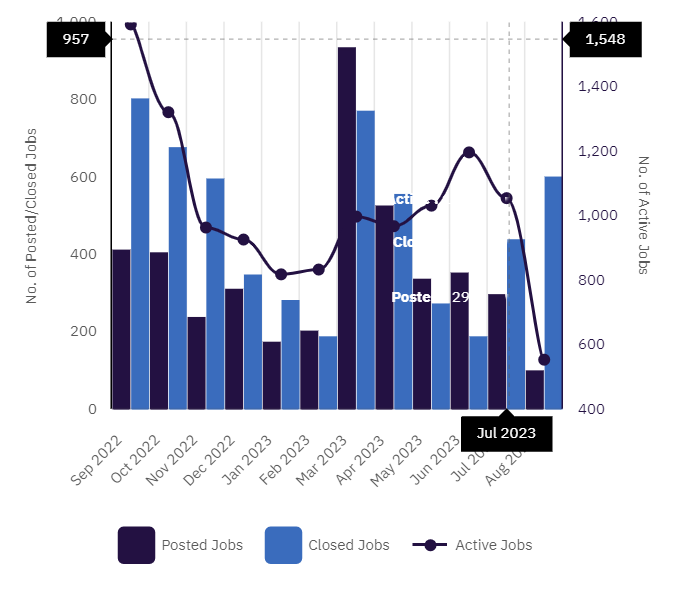
The number of robotics roles posted in the apparel sector fell to the lowest rate this year in August, according to GlobalData’s jobs database.
In March 2023, the number of robotics jobs posted in the apparel sector totalled 932. By August this had fallen to 97 – the lowest rate seen so far this year.
The top recruiters for robotics positions in the apparel sector include Amazon, which had a total of 204 active jobs listed in the last 12 months. JD was only slightly behind with a total of 139 active jobs listed in the last 12 months.
Number of robotics jobs in the apparel sector falls in August 2023

Source: GlobalData
The data shows that the US remains the biggest employer of robotics experts within the apparel supply chain, followed by Mexico, Canada, Germany and the UK.
The latest statistics come after several years of heavy investment and interest in robotics in the apparel sector as companies in the supply chain look to streamline processes for both cost-saving and sustainability benefits.

US Tariffs are shifting - will you react or anticipate?
Don’t let policy changes catch you off guard. Stay proactive with real-time data and expert analysis.
By GlobalDataThe latest figures follow a similar trend as seen in 2022, when hiring levels for robotics positions in the apparel supply chain again fell to a year-low.
At the start of this year, Just Style reported that the industry had seen a 29% drop in new job postings related to robotics in Q3 2022 compared with the previous quarter, according to GlobalData’s whitepaper on Robotics in Apparel – Hiring Activity in Q3 2022.
In May, the Robotics Living Lab announced plans to build a £4m (US$5m) micro-scale robotic fashion production facility in the UK, aimed at exploring more sustainable approaches for fashion manufacturing.
Our signals coverage is powered by GlobalData’s Thematic Engine, which tags millions of data items across six alternative datasets — patents, jobs, deals, company filings, social media mentions and news — to themes, sectors and companies. These signals enhance our predictive capabilities, helping us to identify the most disruptive threats across each of the sectors we cover and the companies best placed to succeed.



